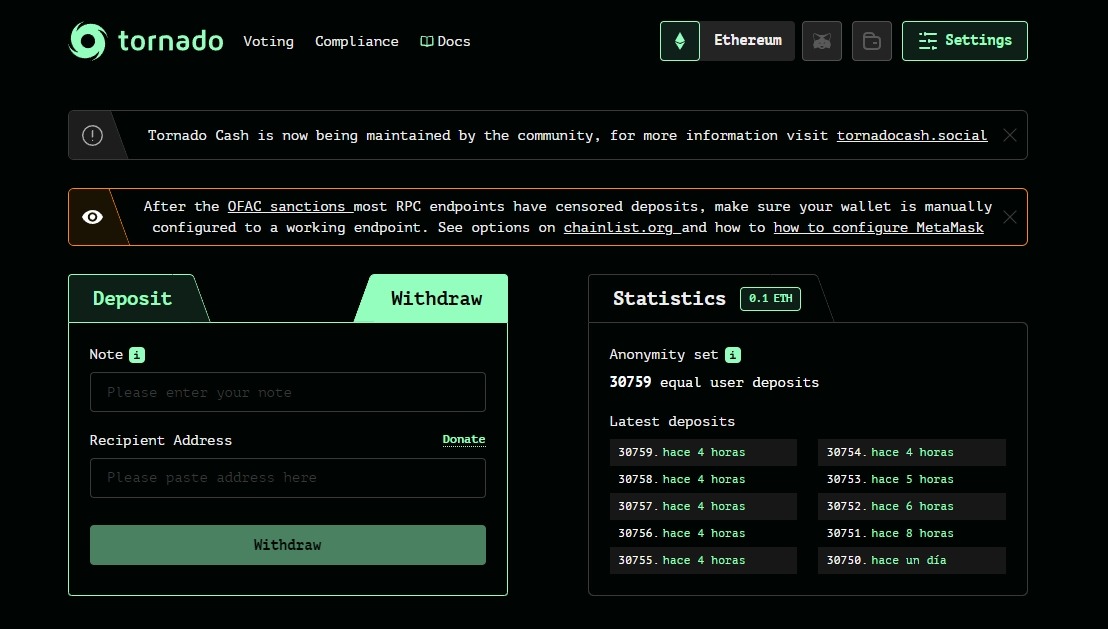Let’s remember that centralization occurs when one or a few entities control a platform or service from behind the scenes. This can, and has, created its own set of problems. Without decentralization, we risk repeating the failures of traditional finance, with gatekeepers, censorship, and single points of failure. Yet over time, parts of crypto’s infrastructure are drifting toward centralized control.
What began as permissionless, open systems are increasingly shaped by dominant actors in key layers. The question becomes: how do we notice when centralization is creeping in, and how can we push back, even with modest steps?
Why Decentralization Still Matters
Decentralization isn’t just a fancy buzzword to sell digital products. It’s the principle that makes crypto worth trusting in the first place. When no single entity controls the system, no gatekeeper can decide who participates or who gets blocked. That means users can transfer value, publish data, or build tools without asking for permission. It’s freedom, but in network form.
When control concentrates in a few hands, then freedom starts to fade. A centralized exchange (like Coinbase or Binance) can freeze withdrawals for any reason; a dominant “validator” or group of “validators” in a Proof-of-Stake (PoS) network can censor transactions; a government can pressure a single operator or a small group of operators instead of thousands. In those potential scenarios, decentralization stops being a theory and becomes protection. It’s what allows crypto to keep functioning even when politics, outages, or business failures strike.
From a financial angle, decentralization also spreads risk. When a system has many independent actors verifying and storing data, a single failure doesn’t take everything down. It’s like weaving a net instead of stretching a single thread: if one strand snaps, the rest still hold together.
Finally, decentralization nurtures innovation. Open participation means new developers can propose upgrades or create alternatives without seeking approval from a monopoly. The explosion of new chains and applications was possible precisely because no one was in charge of permissioning innovation. That freedom is what gave crypto its creative spark, and losing it would dim the entire ecosystem. n
Where Centralization Is Appearing Today
Despite the ideals, centralization is quietly running in several layers of crypto. Custodial exchanges still hold a great portion of user funds, concentrating financial control in a handful of platforms. If those platforms face pressure from regulators or suffer downtime, the effects could ripple across millions of users —as it happened with the downfall of FTX. It’s an irony that a movement built to remove middlemen now leans on a few massive intermediaries.
Another clear sign of centralization creeping into crypto is validator censorship. In theory, every transaction should have an equal chance of being processed, but in practice, “validators” can (and sometimes do) exclude transactions they consider “risky” or politically inconvenient. After the U.S. sanctioned Tornado Cash in 2022, many Ethereum “validators” began rejecting transactions linked to it to comply with regulations, for instance.

Since “validators” (who are actually block builders) decide what gets included, nearly half of Ethereum’s blocks excluded such transactions at some point, showing how fragile decentralization becomes when middlemen can silence parts of a network. And this happens because the network was designed that way.
… And There Are More Places
We’re definitely seeing more centralization in crypto now than five years ago. For example, institutional actors are holding huge chunks of the market: one report says that over 30% of all Bitcoin supply is now controlled by treasuries, ETFs and public companies. And that’s not to mention the next US Bitcoin Reserve, established this year by the Trump’s administration.
Large companies are also piling into crypto in a way we didn’t see before. Corporations now hold roughly 855,000 BTC, or around 4% of Bitcoin’s supply, and in recent quarters their accumulations have outpaced ETFs. This might not be so bad in Bitcoin with its Proof-of-Work consensus, however in Proof-of-Stake networks like Ethereum and Solana, ownership translates to direct control of what’s allowed to be included in blocks, and it’s rapidly concentrating in these networks too. These moves not only shift influence toward fewer actors but also mean decision-making and market influence lean more toward institutions than broad networks of users.
Even DeFi is not immune. A report from the Bank for International Settlements shows that behind the appearance of openness, control often sits with a limited set of token holders, usually from venture capital companies. They can even collude to alter “decentralized” apps for financial gain. Andreessen Horowitz (a16z), a major VC in crypto, has been accused of this several times.
In short, if a supposedly decentralized platform doesn’t have enough participants, or if those participants hand over custody of their assets or votes to an intermediary, it will stay as centralized as a small bank.
How To Spot Centralization
Spotting centralization doesn’t require deep technical skills. It starts with asking who controls what. If a service keeps the private keys, it’s in charge of your funds. If a network relies on a small handful of “validators” or servers, it’s more fragile than it looks. And if decisions come from a closed circle, the project may already be centralized in practice, no matter how decentralized it claims to be.
A few simple checks can reveal a lot. Look at how many independent “validators” or nodes are active, and, even more importantly, how much they can control at the end of the day. If two or three entities dominate and have broad powers, that’s a sign of imbalance. Examine governance forums or websites to see who proposes and passes updates. Transparency is a good indicator: open discussions suggest power is distributed; silence from the top often means otherwise.

The architecture itself can offer clues. Obyte, for example, uses a Directed Acyclic Graph (DAG) instead of a blockchain, spreading validation across users rather than relying on miners or stakers. Its Order Providers (OPs) can’t “approve” or “reject” transactions; they only create waypoints that are used to order them, while on-chain governanceis available to all users. Still, even in systems like Obyte, vigilance is needed to ensure that influence doesn’t cluster among a few active holders. n
Some Steps to Avoid Centralization
Avoiding the risks of centralization doesn’t require turning into a hardcore cypherpunk overnight. Small steps matter. The first is self-custody. When we hold our own private keys (even on just a piece of paper), we remove an entire layer of dependency. We can still use exchanges for trading, but large balances should live in wallets we control. In Obyte, users can create a simple textcoin as a cold and self-custodial wallet, for instance.

Running or supporting independent full nodes is another underrated act of decentralization. All networks offer guides for doing this, and even lighter full nodes, like pruned nodes in Bitcoin, help strengthen network resilience —and your own autonomy. Depending on the network, the requirements may not be a lot, either.
Transparency should also be rewarded. Decentralized projects should publish their code and governance proposals for everyone, even if not everyone is a programmer. Other community members will analyze this data and share their findings. The more visible a system is, the easier it becomes to avoid hidden centralization.
And finally, community participation matters: joining discussions, proposing governance changes, or voting on them keeps teams accountable. The healthier a community’s involvement is, the harder it is for control to concentrate unnoticed. n
Trade-Offs and Realistic Expectations
Complete decentralization is hard, and that’s okay. Systems that distribute power often sacrifice speed or simplicity. Self-custody shifts responsibility to the user, and smaller “validators” can face reliability issues. Still, these ‘inconveniences’ are the price of independence.
We also need to accept that some centralization has value. Exchanges simplify fiat on-ramps, and centralized relays can help coordinate complex systems. The key is to rely on them wisely. Keep only what’s needed on centralized platforms, secure the rest yourself, and always have an exit path. The difference between dependence and convenience is preparation.

Progress happens incrementally. When we choose decentralized services, set up our own nodes, or speak up about governance concentration, we nudge the system back toward its original vision. Decentralization isn’t built overnight, and it’s never granted. It’s a continuous balance between usability and resilience.
In the end, avoiding an excess of centralization is about cultivating good habits. A healthy crypto ecosystem depends on millions of users making small, conscious choices that keep power distributed rather than concentrated. By staying alert and sharing responsibility, we ensure that the open, borderless spirit that gave birth to crypto stays alive —not just in code, but in the way we use it.
:::info
Featured Vector Image by vectorjuice / Freepik
:::
n










